Nestled within the heart of the world’s most diverse rainforest, the Amazon basin offers more than just a breathtaking display of biodiversity. Among its lush foliage and winding waterways is a treasure trove of unique and exotic fruits. These Amazonian fruits offer not only a burst of vibrant flavors, but also a rich cultural, ecological, and economic significance.
Fruits are a vital product in facilitating local and regional markets across the Amazon Basin. Production of these fruits can greatly affect local livelihoods, and improve the stability of communities, governments, and buyers. For instance, to support local producers and buyers, our Bolivian sister organization Conservación Amazónica-ACEAA supported the launch of a major inter-institutional platform called the Inter-Institutional Platform for the Articulation of Amazonian Fruit Production Complexes (PICFA), that helps producers inform and coordinate more seamlessly with government institutions whose policy decisions can to react to changes in the market, climate, and other issues. This platform brings together sustainable producers, buyers, governments, local non-governmental organizations, and other stakeholders across the department of Pando in Bolivia, to provide vital updates and information important for maintaining the quality of the fruit market processes.
These Amazonian fruits produced by many associations ACEAA works with have been revered for their potential health benefits, boasting a wealth of nutrients and antioxidants that offer a glimpse into the intricate relationship between the rainforest ecosystem and human well-being. We’ll explore the unique flavors of these nutritional powerhouses and how they contribute to the overall health of consumers.
Brazil Nut
 These flagship products come from the Madre de Dios region in Peru, where there is a high concentration of trees for harvesting at an economic scale. They are the only species in the global nut market whose production is not cultivated, and can only be harvested in the wild. Harvesting season is between December through March, and can be eaten raw, or toasted.
These flagship products come from the Madre de Dios region in Peru, where there is a high concentration of trees for harvesting at an economic scale. They are the only species in the global nut market whose production is not cultivated, and can only be harvested in the wild. Harvesting season is between December through March, and can be eaten raw, or toasted.
Nutrients: Selenium, vitamin E, copper, linoleic acid, magnesium
Açaí
 Açaí berries are produced in dense branch clusters called ‘panicles’ that contain 500 to 900 fruits each. There is also a green variety called Açaí Tinga that only grows in one Amazon estuary. Asaí Euterpre Precatoria is the species most found in the Bolivian Amazon and has a greater concentration of nutrients. These special fruits have a small window for freshness once harvested, which is why imported Açaí products are often found in powdered or frozen forms. Recently, the growth in Açaí’s popularity predicts the market for this product to reach 1.7 billion by 2028
Açaí berries are produced in dense branch clusters called ‘panicles’ that contain 500 to 900 fruits each. There is also a green variety called Açaí Tinga that only grows in one Amazon estuary. Asaí Euterpre Precatoria is the species most found in the Bolivian Amazon and has a greater concentration of nutrients. These special fruits have a small window for freshness once harvested, which is why imported Açaí products are often found in powdered or frozen forms. Recently, the growth in Açaí’s popularity predicts the market for this product to reach 1.7 billion by 2028
Nutrients: vitamins A, C and E, omega fatty acids, antioxidants, calcium, magnesium, zinc, copper
Cacao
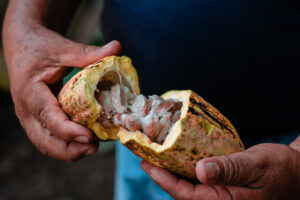 You may know Cacao as a wonderful source of chocolate, but did you know it also is one of the richest antioxidants on earth? These tropical fruits grow in altitudes of 30 – 300 m, and its trees produce roughly 70 fruits annually. There are two ‘flush’ harvesting seasons that last from October to February, and May to August. Upon harvesting, its seeds are fermented for 1-7 before being dried, roasted, and either ground to a powder or winnowed into nibs. Not only is cacao useful for consumption, but cacao trees are also considered a shade crop that provides habitat for other plants and animals.
You may know Cacao as a wonderful source of chocolate, but did you know it also is one of the richest antioxidants on earth? These tropical fruits grow in altitudes of 30 – 300 m, and its trees produce roughly 70 fruits annually. There are two ‘flush’ harvesting seasons that last from October to February, and May to August. Upon harvesting, its seeds are fermented for 1-7 before being dried, roasted, and either ground to a powder or winnowed into nibs. Not only is cacao useful for consumption, but cacao trees are also considered a shade crop that provides habitat for other plants and animals.
Nutrients: Potassium, antioxidants, Iron, Copper, Magnesium, Manganese
Aguaje
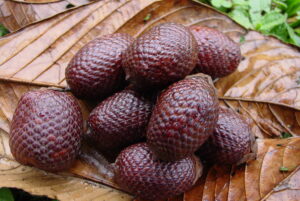 Aguaje is the fruit of the Moriche palm found throughout swamps across South America. The fruit offers a variety of flavor combinations, being sweet, salty, and mildly acidic. Some describe the taste as being similar to carrots when eaten raw. The palm goes by various names based on the country, including canangucho (Colombia), morete (Ecuador), or aguaje (Peru), and Palma Real (Bolivia).
Aguaje is the fruit of the Moriche palm found throughout swamps across South America. The fruit offers a variety of flavor combinations, being sweet, salty, and mildly acidic. Some describe the taste as being similar to carrots when eaten raw. The palm goes by various names based on the country, including canangucho (Colombia), morete (Ecuador), or aguaje (Peru), and Palma Real (Bolivia).
These fruits have been harvested for thousands of years and continue to be one of the most regionally popular fruits within the jungle market. In previous years, the trees were cut down upon harvesting, but conservationists have worked to provide climbing harnesses to allow for a more sustainable and efficient method of harvesting.
Nutrients: vitamins A, E, and C, Manganese, Copper
Copoazú
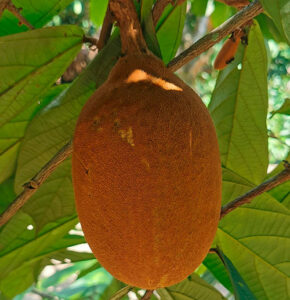 Also known as cupuaçu, Copoazú is the national fruit of Brazil. This fruit is closely related to Cacao and emits an aroma of pineapple and chocolate when opened. Many have described it as tasting similar to chocolate with notes of tropical melon flavors. The seed can also be harvested to make butter that is good for skin and hair health.
Also known as cupuaçu, Copoazú is the national fruit of Brazil. This fruit is closely related to Cacao and emits an aroma of pineapple and chocolate when opened. Many have described it as tasting similar to chocolate with notes of tropical melon flavors. The seed can also be harvested to make butter that is good for skin and hair health.
Nutrients: Vitamin C, linoleic acid, antioxidants, iron, calcium, vitamin B3, and pectin.



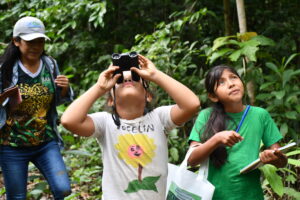 As we enter a fast-growing digital landscape, many organizations and non-profits have begun exploring new ways to secure funding to broaden their impact. Earlier this year, we implemented a new donation tool called
As we enter a fast-growing digital landscape, many organizations and non-profits have begun exploring new ways to secure funding to broaden their impact. Earlier this year, we implemented a new donation tool called 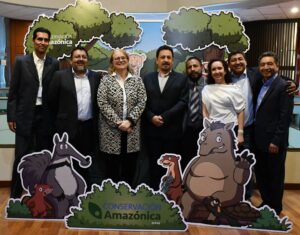

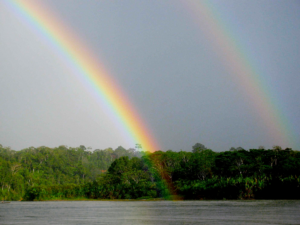
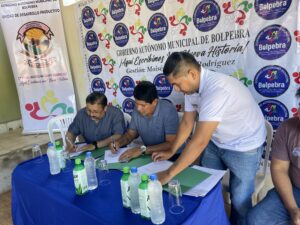
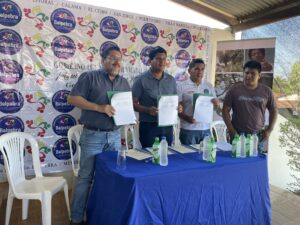 These agreements will later serve as a foundation in support of achieving, through a strategic alliance, the development of synergies for the implementation of actions, planning projects, and comprehensive management of natural resources, as well as actions aimed towards conservation in these municipalities.
These agreements will later serve as a foundation in support of achieving, through a strategic alliance, the development of synergies for the implementation of actions, planning projects, and comprehensive management of natural resources, as well as actions aimed towards conservation in these municipalities.
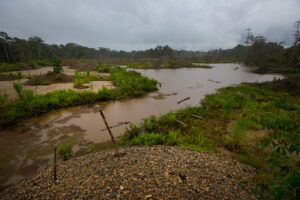 From August 24th – 26th, our Peruvian sister organization
From August 24th – 26th, our Peruvian sister organization  These flagship products come from the Madre de Dios region in Peru, where there is a high concentration of trees for harvesting at an economic scale. They are the only species in the global nut market whose production is not cultivated, and can only be harvested in the wild. Harvesting season is between December through March, and can be eaten raw, or toasted.
These flagship products come from the Madre de Dios region in Peru, where there is a high concentration of trees for harvesting at an economic scale. They are the only species in the global nut market whose production is not cultivated, and can only be harvested in the wild. Harvesting season is between December through March, and can be eaten raw, or toasted. Açaí berries are produced in dense branch clusters called ‘panicles’ that contain 500 to 900 fruits each. There is also a green variety called Açaí Tinga that only grows in one Amazon estuary. Asaí Euterpre Precatoria is the species most found in the Bolivian Amazon and has a greater concentration of nutrients. These special fruits have a small window for freshness once harvested, which is why imported Açaí products are often found in powdered or frozen forms. Recently, the growth in Açaí’s popularity predicts the market for this product to reach 1.7 billion by 2028
Açaí berries are produced in dense branch clusters called ‘panicles’ that contain 500 to 900 fruits each. There is also a green variety called Açaí Tinga that only grows in one Amazon estuary. Asaí Euterpre Precatoria is the species most found in the Bolivian Amazon and has a greater concentration of nutrients. These special fruits have a small window for freshness once harvested, which is why imported Açaí products are often found in powdered or frozen forms. Recently, the growth in Açaí’s popularity predicts the market for this product to reach 1.7 billion by 2028 You may know Cacao as a wonderful source of chocolate, but did you know it also is one of the richest antioxidants on earth? These tropical fruits grow in altitudes of 30 – 300 m, and its trees produce roughly 70 fruits annually. There are two ‘flush’ harvesting seasons that last from October to February, and May to August. Upon harvesting, its seeds are fermented for 1-7 before being dried, roasted, and either ground to a powder or winnowed into nibs. Not only is cacao useful for consumption, but cacao trees are also considered a shade crop that provides habitat for other plants and animals.
You may know Cacao as a wonderful source of chocolate, but did you know it also is one of the richest antioxidants on earth? These tropical fruits grow in altitudes of 30 – 300 m, and its trees produce roughly 70 fruits annually. There are two ‘flush’ harvesting seasons that last from October to February, and May to August. Upon harvesting, its seeds are fermented for 1-7 before being dried, roasted, and either ground to a powder or winnowed into nibs. Not only is cacao useful for consumption, but cacao trees are also considered a shade crop that provides habitat for other plants and animals. Aguaje is the fruit of the Moriche palm found throughout swamps across South America. The fruit offers a variety of flavor combinations, being sweet, salty, and mildly acidic. Some describe the taste as being similar to carrots when eaten raw. The palm goes by various names based on the country, including canangucho (Colombia), morete (Ecuador), or aguaje (Peru), and Palma Real (Bolivia).
Aguaje is the fruit of the Moriche palm found throughout swamps across South America. The fruit offers a variety of flavor combinations, being sweet, salty, and mildly acidic. Some describe the taste as being similar to carrots when eaten raw. The palm goes by various names based on the country, including canangucho (Colombia), morete (Ecuador), or aguaje (Peru), and Palma Real (Bolivia). Also known as cupuaçu, Copoazú is the national fruit of Brazil. This fruit is closely related to Cacao and emits an aroma of pineapple and chocolate when opened. Many have described it as tasting similar to chocolate with notes of tropical melon flavors. The seed can also be harvested to make butter that is good for skin and hair health.
Also known as cupuaçu, Copoazú is the national fruit of Brazil. This fruit is closely related to Cacao and emits an aroma of pineapple and chocolate when opened. Many have described it as tasting similar to chocolate with notes of tropical melon flavors. The seed can also be harvested to make butter that is good for skin and hair health.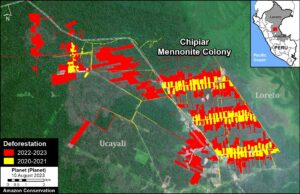
